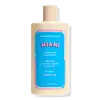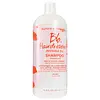What's inside
What's inside
 Key Ingredients
Key Ingredients

 Benefits
Benefits

 Concerns
Concerns

 Ingredients Side-by-side
Ingredients Side-by-side

Water
Skin ConditioningSodium Cocoyl Isethionate
CleansingDisodium Laureth Sulfosuccinate
CleansingSodium Lauryl Sulfoacetate
CleansingCocamidopropylamine Oxide
CleansingSodium Lauroyl Sarcosinate
CleansingParfum
MaskingCoco-Betaine
CleansingSodium Hyaluronate
HumectantArgania Spinosa Kernel Oil
EmollientCitrullus Lanatus Seed Oil
EmollientHelianthus Annuus Seed Extract
Skin ConditioningSqualane
EmollientWheat Amino Acids
Skin ConditioningGlycerin
HumectantPanthenol
Skin ConditioningHydroxyproline
Skin ConditioningSodium PCA
HumectantCoco-Caprylate/Caprate
EmollientDiheptyl Succinate
EmollientPolyquaternium-73
Polyquaternium-10
Silicone Quaternium-18
EmollientQuaternium-80
Divinyldimethicone/Dimethicone Copolymer
Capryloyl Glycerin/Sebacic Acid Copolymer
Skin ConditioningHydroxypropyl Methylcellulose
Emulsion StabilisingPEG-120 Methyl Glucose Trioleate
CleansingPEG-150 Distearate
EmulsifyingGlycol Stearate
EmollientSodium Methyl Cocoyl Taurate
CleansingAcrylates Copolymer
Didecyldimonium Chloride
EmulsifyingSodium Phytate
C9-12 Alkane
SolventC12-13 Pareth-23
CleansingC12-13 Pareth-3
EmulsifyingTrideceth-12
EmulsifyingTrideceth-6
EmulsifyingCitric Acid
BufferingPotassium Hydroxide
BufferingMethylpropanediol
SolventPropanediol
SolventCaprylyl Glycol
EmollientPropylene Glycol
HumectantSodium Benzoate
MaskingPhenoxyethanol
PreservativeCI 17200
Cosmetic ColorantCI 19140
Cosmetic ColorantAlpha-Isomethyl Ionone
PerfumingBenzyl Salicylate
PerfumingHydroxycitronellal
PerfumingLimonene
PerfumingWater, Sodium Cocoyl Isethionate, Disodium Laureth Sulfosuccinate, Sodium Lauryl Sulfoacetate, Cocamidopropylamine Oxide, Sodium Lauroyl Sarcosinate, Parfum, Coco-Betaine, Sodium Hyaluronate, Argania Spinosa Kernel Oil, Citrullus Lanatus Seed Oil, Helianthus Annuus Seed Extract, Squalane, Wheat Amino Acids, Glycerin, Panthenol, Hydroxyproline, Sodium PCA, Coco-Caprylate/Caprate, Diheptyl Succinate, Polyquaternium-73, Polyquaternium-10, Silicone Quaternium-18, Quaternium-80, Divinyldimethicone/Dimethicone Copolymer, Capryloyl Glycerin/Sebacic Acid Copolymer, Hydroxypropyl Methylcellulose, PEG-120 Methyl Glucose Trioleate, PEG-150 Distearate, Glycol Stearate, Sodium Methyl Cocoyl Taurate, Acrylates Copolymer, Didecyldimonium Chloride, Sodium Phytate, C9-12 Alkane, C12-13 Pareth-23, C12-13 Pareth-3, Trideceth-12, Trideceth-6, Citric Acid, Potassium Hydroxide, Methylpropanediol, Propanediol, Caprylyl Glycol, Propylene Glycol, Sodium Benzoate, Phenoxyethanol, CI 17200, CI 19140, Alpha-Isomethyl Ionone, Benzyl Salicylate, Hydroxycitronellal, Limonene
Water
Skin ConditioningDisodium Laureth Sulfosuccinate
CleansingSodium Cocoyl Isethionate
CleansingSodium Lauryl Sulfoacetate
CleansingGlycerin
HumectantSodium Lauroyl Sarcosinate
CleansingCoco-Betaine
CleansingAcrylates Copolymer
Decyl Glucoside
CleansingButylene Glycol
HumectantLaureth-23
CleansingGlycol Distearate
EmollientGlycereth-26
HumectantVitis Vinifera Seed Oil
EmollientPrunus Amygdalus Dulcis Oil
Skin ConditioningMacadamia Integrifolia Seed Oil
Skin ConditioningCocos Nucifera Oil
MaskingGardenia Taitensis Flower Extract
Skin ConditioningArgania Spinosa Kernel Oil
EmollientCarthamus Tinctorius Seed Oil
MaskingSodium Hyaluronate
HumectantHydroxypropyltrimonium Hydrolyzed Corn Starch
Phenyl Trimethicone
Skin ConditioningPanthenyl Ethyl Ether
Magnesium Nitrate
Sodium PCA
HumectantPantethine
EmollientPolyquaternium-7
Polyquaternium-10
Sodium Acetate
BufferingIsopropyl Alcohol
SolventPotassium Hydroxide
BufferingLaureth-3
EmulsifyingTrisodium Sulfosuccinate
BufferingGlycol Stearate
EmollientSodium Chloride
MaskingSodium Sulfate
Parfum
MaskingLinalool
PerfumingHexyl Cinnamal
PerfumingTetrasodium EDTA
Sodium Citrate
BufferingPhenoxyethanol
PreservativeMethylchloroisothiazolinone
PreservativeMethylisothiazolinone
PreservativeSodium Benzoate
MaskingWater, Disodium Laureth Sulfosuccinate, Sodium Cocoyl Isethionate, Sodium Lauryl Sulfoacetate, Glycerin, Sodium Lauroyl Sarcosinate, Coco-Betaine, Acrylates Copolymer, Decyl Glucoside, Butylene Glycol, Laureth-23, Glycol Distearate, Glycereth-26, Vitis Vinifera Seed Oil, Prunus Amygdalus Dulcis Oil, Macadamia Integrifolia Seed Oil, Cocos Nucifera Oil, Gardenia Taitensis Flower Extract, Argania Spinosa Kernel Oil, Carthamus Tinctorius Seed Oil, Sodium Hyaluronate, Hydroxypropyltrimonium Hydrolyzed Corn Starch, Phenyl Trimethicone, Panthenyl Ethyl Ether, Magnesium Nitrate, Sodium PCA, Pantethine, Polyquaternium-7, Polyquaternium-10, Sodium Acetate, Isopropyl Alcohol, Potassium Hydroxide, Laureth-3, Trisodium Sulfosuccinate, Glycol Stearate, Sodium Chloride, Sodium Sulfate, Parfum, Linalool, Hexyl Cinnamal, Tetrasodium EDTA, Sodium Citrate, Phenoxyethanol, Methylchloroisothiazolinone, Methylisothiazolinone, Sodium Benzoate
Ingredients Explained
These ingredients are found in both products.
Ingredients higher up in an ingredient list are typically present in a larger amount.
Acrylates Copolymer is used as a film-forming agent and texture enhancer.
After applied, Acrylates Copolymer forms a thin film cover that helps skin feel more soft. It can help sunscreens become more water-resistant.
It is also used to make a product more thick.
Learn more about Acrylates CopolymerYou may know this ingredient as argan oil. Argan Oil has antioxidant, hydrating, and soothing properties.
Studies have shown argan oil can help fight again radical damage from the sun. This makes it effective at preventing hyperpigmentation.
Large amounts of vitamin E found in argan oil helps the skin retain water. Argan oil also contains fatty acids such as linoleic acid, oleic acid, and palmitic acid. It is also a good source of lipids.
Another benefit of argan oil is skin-soothing. It can help reduce inflammation-related skin symptoms.
Argan Oil is effective at regulating sebum production in pores. This can make it effective at treating hormonal acne.
Traditionally, argan oil was used for its antibacterial and antifungal properties. However, argan oil contains fatty acids that may make it not fungal-acne safe.
Argan Trees are native to Morocco.
Learn more about Argania Spinosa Kernel OilCoco-Betaine is the natural version of Cocamidopropyl Betaine. It is often derived from coconuts.
Coco-Betaine is a surfactant, meaning it helps remove dirt and oil from the skin.
This ingredient is a cleansing agent, surfactant, and foam booster. It considered an alternative to traditional sulfates (Sulfosuccinate) and is allowed in "sulfate-free" products.
According to a manufacturer, this ingredient is mild and can be used in baby and bath options.
Glycerin is already naturally found in your skin. It helps moisturize and protect your skin.
A study from 2016 found glycerin to be more effective as a humectant than AHAs and hyaluronic acid.
As a humectant, it helps the skin stay hydrated by pulling moisture to your skin. The low molecular weight of glycerin allows it to pull moisture into the deeper layers of your skin.
Hydrated skin improves your skin barrier; Your skin barrier helps protect against irritants and bacteria.
Glycerin has also been found to have antimicrobial and antiviral properties. Due to these properties, glycerin is often used in wound and burn treatments.
In cosmetics, glycerin is usually derived from plants such as soybean or palm. However, it can also be sourced from animals, such as tallow or animal fat.
This ingredient is organic, colorless, odorless, and non-toxic.
Glycerin is the name for this ingredient in American English. British English uses Glycerol/Glycerine.
Learn more about GlycerinGlycol Stearate comes from stearic acid and ethylene glycol.
It is a creamy wax used to stabilize ingredients as an emulsifier. Glycol stearate also contains emollient properties. Emollients sit on top of the skin to prevent moisture from escaping.
This ingredient may not be Malassezia folliculitis, or fungal-acne safe.
Learn more about Glycol StearateParfum is a catch-all term for an ingredient or more that is used to give a scent to products.
Also called "fragrance", this ingredient can be a blend of hundreds of chemicals or plant oils. This means every product with "fragrance" or "parfum" in the ingredients list is a different mixture.
For instance, Habanolide is a proprietary trade name for a specific aroma chemical. When used as a fragrance ingredient in cosmetics, most aroma chemicals fall under the broad labeling category of “FRAGRANCE” or “PARFUM” according to EU and US regulations.
The term 'parfum' or 'fragrance' is not regulated in many countries. In many cases, it is up to the brand to define this term.
For instance, many brands choose to label themselves as "fragrance-free" because they are not using synthetic fragrances. However, their products may still contain ingredients such as essential oils that are considered a fragrance by INCI standards.
One example is Calendula flower extract. Calendula is an essential oil that still imparts a scent or 'fragrance'.
Depending on the blend, the ingredients in the mixture can cause allergies and sensitivities on the skin. Some ingredients that are known EU allergens include linalool and citronellol.
Parfum can also be used to mask or cover an unpleasant scent.
The bottom line is: not all fragrances/parfum/ingredients are created equally. If you are worried about fragrances, we recommend taking a closer look at an ingredient. And of course, we always recommend speaking with a professional.
Learn more about ParfumPhenoxyethanol is a preservative that has germicide, antimicrobial, and aromatic properties. Studies show that phenoxyethanol can prevent microbial growth. By itself, it has a scent that is similar to that of a rose.
It's often used in formulations along with Caprylyl Glycol to preserve the shelf life of products.
Polyquaternium-10 is an ammonium salt of hydroxyethylcellulose. It is a white and granular powder used as a film-former and anti-static agent.
This ingredient is commonly found in hair conditioning products. According to a manufacturer, its positive charge makes it great for absorbing hair proteins. The manufacturer also states this ingredient helps with curl retention.
For haircare friends: this ingredient is not a silicone.
Learn more about Polyquaternium-10Potassium hydroxide is commonly known as caustic potash. It is used to fix the pH of a product or as a cleaning agent in soap. In cleansers, it is used for the saponification of oils.
Sapnification is the process of creating fatty acid metal salts from triglycerides and a strong base. During this process, Potassium Hydroxide is used up and is not present in the final product.
Using high concentrations of Potassium Hydroxide have shown to irritate the skin.
Learn more about Potassium HydroxideSodium Benzoate is a preservative. It's used in both cosmetic and food products to inhibit the growth of mold and bacteria. It is typically produced synthetically.
Both the US FDA and EU Health Committee have approved the use of sodium benzoate. In the US, levels of 0.1% (of the total product) are allowed.
Sodium benzoate works as a preservative by inhibiting the growth of bacteria inside of cells. It prevents the cell from fermenting a type of sugar using an enzyme called phosphofructokinase.
It is the salt of benzoic acid. Foods containing sodium benzoate include soda, salad dressings, condiments, fruit juices, wines, and snack foods.
Studies for using ascorbic acid and sodium benzoate in cosmetics are lacking, especially in skincare routines with multiple steps.
We always recommend speaking with a professional, such as a dermatologist, if you have any concerns.
Learn more about Sodium BenzoateSodium cocoyl isethionate is a natural ingredient from coconut oil. It is an ultra gentle cleanser that gives a nice foam without drying the skin or impacting the skin barrier.
The amount of foam created depends on the amount of sodium cocoyl isethionate used in the product.
This ingredient also helps improve the spreadability of a product.
Learn more about Sodium Cocoyl IsethionateSodium Hyaluronate is hyaluronic acid's salt form. It is commonly derived from the sodium salt of hyaluronic acid.
Like hyaluronic acid, it is great at holding water and acts as a humectant. This makes it a great skin hydrating ingredient.
Sodium Hyaluronate is naturally occurring in our bodies and is mostly found in eye fluid and joints.
These are some other common types of Hyaluronic Acid:
Learn more about Sodium HyaluronateSodium Lauroyl Sarcosinate is a cleansing agent and emulsifier. It is a surfactant derived from sarcosine, and a common source is coconut oil.
As a surfactant, Sodium Lauroyl Sarcosinate helps lift dirts, oil, and other molecules to be washed away. In leave-on products, this ingredient is used as an emulsifier. Emulsifier help prevent ingredients such as oils and waters from separating.
Sodium Lauroyl Sarcosinate is also commonly found as a foaming agent in shampoo, toothpaste, and shaving foam. It is amphiphilic, meaning it loves both water and fats.
Learn more about Sodium Lauroyl SarcosinateSodium Lauryl Sulfoacetate is an organic salt with a naturally sweet odor. It is an alternative to traditional sulfates and is commonly found in "sulfate-free" products.
In cosmetics, this ingredient is used to increase the volume of foam, emulsify ingredients, and as a cleansing agent.
As a cleansing agent, sodium lauryl sulfoacetate helps reduce the surface tension of dirt, oil, and other pollutants so they can be rinsed away easily.
Cosmetic Ingredient Review found this ingredient to irritate the eyes and skin in concentrations of 0.18% and 0.7%.
Learn more about Sodium Lauryl SulfoacetateSodium PCA is the sodium salt of pyroglutamic acid. It is naturally occurring in our skin's natural moisturizing factors where it works to maintain hydration.
The PCA stands for pyrrolidone carboxylic acid, a natural amino acid derivative.
This ingredient has skin conditioning, anti-inflammatory, and humectant properties. Humectants help hydrate your skin by drawing moisture from the air. This helps keep your skin moisturized.
Learn more about Sodium PCAWater. It's the most common cosmetic ingredient of all. You'll usually see it at the top of ingredient lists, meaning that it makes up the largest part of the product.
So why is it so popular? Water most often acts as a solvent - this means that it helps dissolve other ingredients into the formulation.
You'll also recognize water as that liquid we all need to stay alive. If you see this, drink a glass of water. Stay hydrated!
Learn more about Water